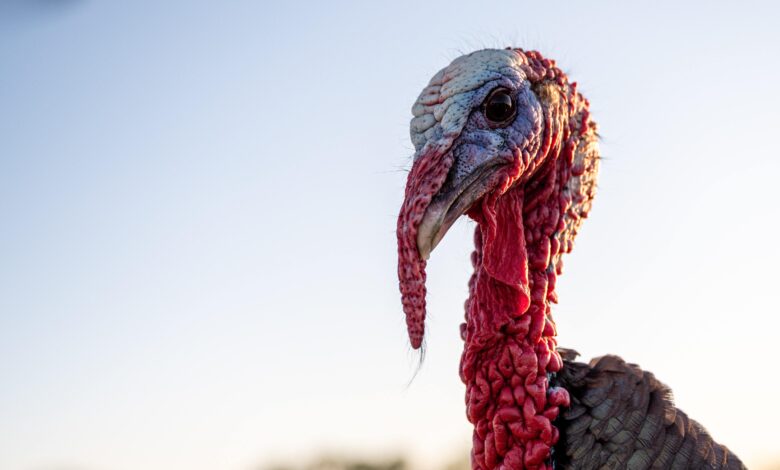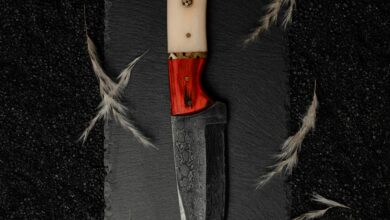What Do Wild Turkeys Eat? The Hunter’s Guide

Not all turkey hunters are aware of what turkeys eat in the wild. But, that knowledge can significantly impact the chances of a successful hunt.
If you know what they eat you can track them better and put yourself in a position to find them.
In this article, we lay down some facts about gobbler grub that will help you target the birds more effectively.
What Do Turkeys Like To Eat?
Since turkeys are true omnivores, they will eat almost anything easily available in the wild. Some of their favorite foods are bugs, grasses, forbs, tender greens, fruits, nuts, berries, and other seeds and grains. They also feed on small animals, amphibians, small mammals, and the list goes on. However, nuts make up the largest part of their diet.
Here is something weird. Turkeys even eat small rocks and pebbles to aid their digestion! Gobblers have also been seen feeding on crayfish during the warm phases of winter.
In truth, turkeys adjust their diet depending on how plant and insect availability changes through the year. For example, when most food sources dry up in winter, they feed on hard mast, acorns, and waste grains found on the forest floor.
Despite having a varied dietary range, there are four food items that turkeys love most. Take a look.
Bugs
If there is one food that wild turkeys love gobbling up, it is bugs. Grasshoppers, ants, spiders, crickets, beetles, caterpillars, and millipedes are some of their favorites. One study suggests that turkeys can eat as many as 200 critters in a day. They even consume ticks that are in the larval and nymph stages.
Insects are great protein sources for hens while producing eggs. Once the poults are hatched, they feed exclusively on bugs for the first few weeks. As the poults grow, they look beyond insects and start consuming plant-based foods.
The turkey’s preference for bugs is not just during spring but any time of the yeast when insects are around. They will even eat snails, salamanders, and tadpoles from water pools. Beyond that, they also eat small snakes and lizards.
Hard and Soft Mast
When other food sources are unavailable during early spring and winter, turkeys feed on hard mast and acorns. Hard masts are mostly nuts and fruits like chestnuts, beechnuts, hawthorn, witch hazel, and ironwood, produced by woody trees.
Mature pine seeds and acorns, especially the white oak acorns, are a few other items that eastern and western turkeys prefer on their dinner plate. The birds swallow acorns whole and then grind and digest them in their gizzard. I have heard veteran hunters mention that they heard grinding and thumping sounds as turkeys digest acorns in their gizzards.
As spring progresses, turkeys start feeding on soft masts produced in vines. shrubs, and trees. These include black cherry, wild grape, mulberries, and fruits from skunkbrush, manzanita, and juniper plants.
Grasses
Native grasses serve a dual purpose for turkeys – food and security cover. They consume the tender green shoots as well as grass seeds. Plus, grasslands are thriving spots for young poults where they can forage bugs. Some of the common grass types that turkeys prefer are big and little bluestem, Indiangrass, switchgrass, needlegrass, buffalo grass, and blue gamma grass.
Forbs
Forbs are flowering plant species that include wildflowers and are an important wild dish for turkeys. These plants can be annual or perennial. Some examples are sunflowers, ferns, alfalfa, milkweed, and other buttercup and aster family plants. In truth, forbs are not just popular among turkeys but for deer herds as well.
Some forbs like ragweeds create a dense canopy a few inches from the ground. However, they are less dense at the ground level. This growth pattern provides an excellent “umbrella cover” for turkey broods to move around safely.
How Can the Knowledge of the Wild Turkey Diet Help While Hunting?
Setting up your ground blind in the right spot in the turkey woods can be challenging. The one place that turkeys want to be is the spot where there is food. So, once you have located the food sources, you can be sure that the turkeys are around.
If you are ready with the best turkey calls, calling them to a spot near a food source is a great idea. Even if the gobblers are too focused on breeding, the hens will want to eat and prepare for nesting. They are stocking up on fat in early and mid-spring that will last them through the nesting phase. If you have located the hens, know that the toms will pay a visit.
Then again, it is not that the toms go without food while strutting. After all, the process of strutting requires a lot of energy. I have seen gobblers taking a break from courtship activities and foraging hungrily from the forest floor.
In spring, grassy areas offer plenty of food and lots of open space for gobblers to strut around. Plus, they also allow the birds to see each other and the surroundings. Generally, a combination of fresh green vegetation and bright flowers that attract insects works as a turkey magnet. The birds can devour the insects and feed on the flowers as well.
As spring progresses, you can find birds seeking greens at the edges of the hardwood forests. That way they can feed and seek cover in the trees whenever a threat arises. If there is a water source nearby, even better. Many hunters also use food plots that attract whitetails as well as turkeys. These include crops like oats, soybeans, clover, and chufa.
While scouting for turkeys, keep an eye out for the scratch marks on the forest floor. Turkeys tend to scratch the soil with their toenails and disturb the leaves when they are foraging for insects and masts.
Most scratches are V-shaped and the wide end of the V indicates the direction that the birds are heading. These signs can help you identify the turkey highways and increase your chances of success.
Final Thoughts
Summing up, food is where the turkeys are. Filling your knowledge gaps about the wild turkey diet can help you set your ambushes more effectively.
Note, that this article is not a comprehensive coverage of everything that turkeys eat in the wild. Turkeys are opportunistic feeders and their exact diet will vary according to the location, environment, and weather patterns. In other words, turkeys have excellent adaptability and will change their diet as needed.
Even so, once you learn the basic answer to the question “what do wild turkeys eat”, it helps in locating the perfect turkey spot.


